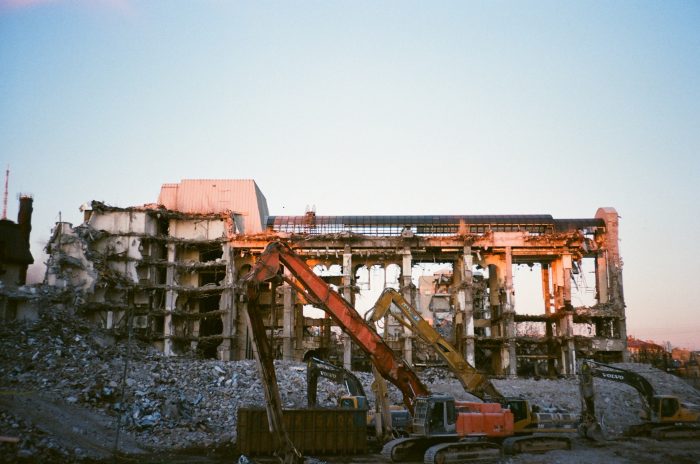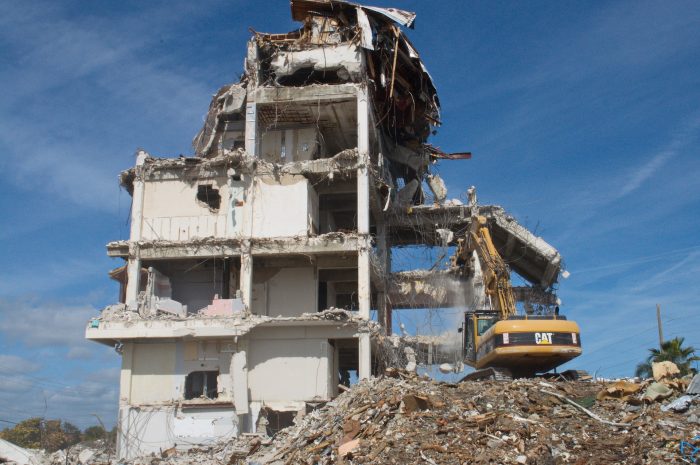Demolition work with cranes can be a complex and potentially dangerous operation. Using cranes in demolition projects can pose significant hazards to workers and the general public, including fall hazards, collapse hazards, flying debris hazards, and fire and explosion hazards. Safety must be a top priority in any demolition project involving cranes.
In this blog post, written in cooperation with professionals from demolitionsgoldcoast.com.au, we will discuss the potential hazards involved in demolition work with cranes and the measures that must be taken to ensure the safety of workers and the general public. We will explore crane operation safety protocols, proper use of demolition equipment, and emergency response planning to help mitigate the risks associated with demolition work with cranes.

By prioritising safety in demolition work, we can help prevent accidents and protect workers, the public, and the environment.
Potential hazards involved in demolition with cranes
One of the most significant hazards in demolition work with cranes is fall hazards for workers. Workers operating cranes, handling demolition equipment, or working at heights are at risk of falling and suffering severe injuries or death. It is important that workers receive proper training and use appropriate safety equipment, such as harnesses and fall protection systems, to minimise the risk of falls.
Another hazard associated with crane demolition is the potential for structures to collapse. This can occur if the crane or demolition equipment damages or destabilises the structure, putting workers and the public at risk. Adequate planning and preparation, including site safety assessments and proper crane placement, can help prevent structural collapse in demolition projects.
Flying debris is another potential hazard in demolition work with cranes. Debris from the demolition can be hurled into the air, posing a danger to workers, bystanders, and nearby structures. Safety barriers and warning systems should be in place to minimise this risk, and workers should wear appropriate personal protective equipment (PPE).
Finally, demolition work with cranes can also pose a risk of fire and explosion. This can occur due to sparks generated by the demolition process or improper storage and handling of demolition equipment and materials. To reduce the risk of fire and explosion in demolition projects, workers should be trained in proper storage, and handling of flammable materials and emergency response teams should be in place.
Crane operation safety protocols
One of the key components of ensuring safety in demolition work with cranes is to follow proper crane operation safety protocols. This starts with proper crane maintenance and inspections. Cranes should be regularly inspected and maintained to ensure they are in good working condition and free of any defects that could compromise safety. This includes regular checks of the crane’s mechanical and electrical systems and regular inspections of its load-bearing capacity.
Another important factor in crane operation safety has qualified crane operators. Operators should have the necessary training and experience to operate cranes safely in demolition projects. This includes knowledge of crane operation procedures, crane maintenance, and site safety protocols.
Before any crane operation begins, a site safety assessment should be conducted to identify and address any potential hazards that may impact crane safety. This includes checking the stability of the ground, ensuring that the crane has clear access to the site, and checking for overhead obstacles that may interfere with crane operation.

Finally, crane operations in demolition projects should always adhere to crane industry standards, such as those established by the American National Standards Institute (ANSI) and the Occupational Safety and Health Administration (OSHA). These standards provide guidelines for safe crane operation, maintenance, and inspections and help ensure that crane operators and workers follow best practices for crane safety in demolition projects.
Proper use of demolition equipment
To ensure the safe use of demolition equipment in demolition projects, it is important to follow proper procedures for the use of this equipment. This starts with providing proper training for workers who will be handling and operating demolition equipment. Workers should receive training in the safe handling, operation, and maintenance of the equipment they will be using, as well as in emergency response procedures.
Another important factor in the proper use of demolition equipment is the safe handling and storage of this equipment. Demolition equipment should be stored in a secure and properly labelled area, and workers should be trained in properly handling and storing these tools to minimise the risk of accidents or equipment damage.
Personal protective equipment (PPE) is also important for safe demolition work. Workers should wear appropriate PPE, such as hard hats, safety glasses, and protective clothing, to minimise the risk of injury from flying debris, falls, or other hazards associated with demolition work.
Finally, it is important to inspect demolition equipment before use to ensure that it is in good working condition and free of any defects that could compromise safety. This includes regular inspections of the equipment’s mechanical and electrical systems and checking for any visible signs of damage, wear, or corrosion. By conducting regular equipment inspections, workers can help ensure that demolition equipment is used safely and efficiently in demolition projects.